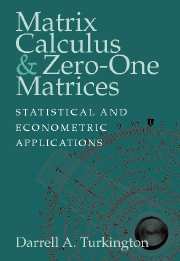1 - Classical Statistical Procedures
Published online by Cambridge University Press: 14 September 2009
Summary
INTRODUCTION
An alternative title to this book could have been The Application of Classical Statistical Procedures to Econometrics or something along these lines. What it purports to do is provide the reader with mathematical tools that facilitate the application of classical statistical procedures to the complicated statistical models that we are confronted with in econometrics. It then demonstrates how these procedures can be applied to a sequence of linear econometric models, each model being more complicated statistically than the previous one. The statistical procedures I have in mind are these centered around the likelihood function: procedures that involve the score vector, the information matrix, and the Cramer–Rao lower bound, together with maximum-likelihood estimation and classical test statistics.
Until recently, such procedures were little used by econometricians. The likelihood function in most econometric models is complicated, and the first-order conditions for maximizing this function usually give rise to a system of nonlinear equations that is not easily solved. As a result, econometricians developed their own class of estimators, instrumental variable estimators, that had the same asymptotic properties as those of maximum-likelihood estimators (MLEs) but were far more tractable mathematically [see Bowden and Turkington (1990)]. Nor did econometricians make much use of the prescribed classical statistical procedures for obtaining test statistics for the hypotheses of interest in econometric models; rather, test statistics were developed on an ad hoc basis.
- Type
- Chapter
- Information
- Matrix Calculus and Zero-One MatricesStatistical and Econometric Applications, pp. 1 - 6Publisher: Cambridge University PressPrint publication year: 2001



